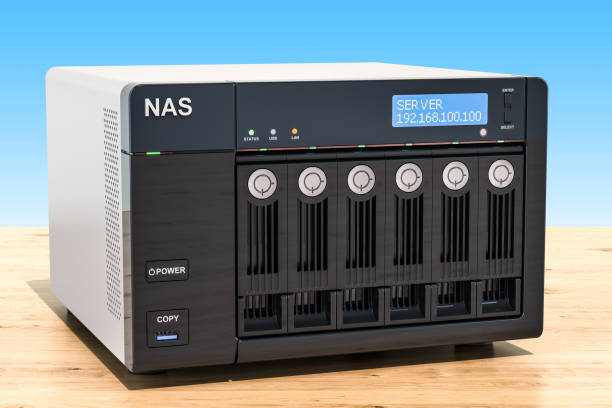
- A DIY NAS can cost as little as $150 (excluding drives) by using secondhand PC components, offering huge savings compared to commercial NAS units.
- Key parts include a used motherboard/CPU combo, 8GB of RAM, a large case with multiple drive bays, a reliable PSU, and add-on cards for extra SATA ports and faster network speeds.
- TrueNAS SCALE is a powerful and beginner-friendly operating system that makes setting up storage pools, file sharing, and backups straightforward.
- RAIDZ configuration provides a smart balance between storage space and redundancy, allowing one drive to fail without data loss.
- Performance can rival prebuilt systems, achieving 150 MB/s write and over 200 MB/s read speeds using a 2.5GbE network connection.
- Power efficiency is excellent, using only 38–45 watts even under load—ideal for 24/7 operation at home.
- DIY NAS builds are flexible and upgradable, letting you add more drives, memory, or better components later while maintaining full control over your system.
Building your own NAS (Network Attached Storage) can sound intimidating, but it’s more accessible—and affordable—than most people think. Instead of buying a prebuilt solution for hundreds (or even thousands) of dollars, you can repurpose used PC components and create a powerful, energy-efficient, and reliable NAS for a fraction of the price.
In this guide, we’ll go step-by-step through how to build a NAS at home without breaking the bank. You’ll learn what components you actually need, how to configure the system, and how to get great performance while keeping costs down.
What Exactly Is a NAS and Why Build One Yourself?
If you’ve ever asked, “what is NAS storage?”, it’s essentially a small, always-on server that stores and shares files across your home network. It allows you to centralize data—like photos, videos, backups, and documents—so every device in your home can access them anytime.
While you can buy a prebuilt NAS, DIY builders often prefer creating their own for several reasons:
- Cost savings – You can assemble a reliable NAS for $150–$200 (excluding drives).
- Customizability – You choose the operating system, drives, and performance level.
- Repairability – Standard PC components are easy to replace or upgrade.
- Performance – With proper tuning, a DIY NAS can outperform many budget prebuilt systems.
If you’ve got some spare PC parts or enjoy tinkering with hardware, building a NAS at home is not only practical—it’s rewarding.
How to Build a NAS on a Budget
Step 1: Choosing the Right Components
When building a NAS on a budget, it’s important to balance cost, efficiency, and reliability. Below is an example of a setup that costs around $150 (not counting hard drives).
Case: Room for Growth
A large, older PC case is ideal because it often comes with multiple drive bays for storage expansion. Something like an old Antec tower case with plenty of room can be found secondhand for around $20.
Motherboard and CPU: Energy-Efficient Combo
An HP 200 G1 motherboard with a soldered Intel J2900 (4-core, 2.41 GHz) processor is an affordable choice. It’s efficient, quiet, and sufficient for tasks like file sharing and light editing. Used combo boards with preinstalled CPUs and RAM can often be found for around $50.
RAM: The More, the Better (Within Limits)
An 8GB DDR3L module is enough for light NAS duties. More memory helps caching in systems like ZFS, but even 8GB provides good performance for small home servers.
Power Supply: Reliable and Used
A used 650W PSU from a reputable brand like Gigabyte can power your setup easily and cost about $30.
SATA Expansion: More Drive Connections
If your motherboard has limited SATA ports, add a PCIe to 4-port SATA card for around $25–$30. This allows more drives, but remember that cheaper cards can fail over time.
Network Card: Faster Transfers
To improve transfer speeds, consider adding a 2.5 Gigabit Ethernet card (around $15). Even if your router supports only 1 Gbps, you can set up a direct connection between your PC and NAS for faster data transfers.
Boot Drive: Skip the USB Stick
While you can technically boot your NAS from a USB stick, a small SSD is far more reliable. If possible, use two mirrored SSDs for redundancy.
Storage Drives: Where Your Data Lives
This is where most of your investment should go. NAS-rated drives like Seagate IronWolf or Western Digital Red are designed for 24/7 use. A set of 4 x 4TB drives offers a good balance of space and redundancy when configured properly.
Step 2: Setting Up the Software
There are several NAS operating systems available, but for beginners, TrueNAS SCALE is one of the best. It’s open-source, feature-rich, and user-friendly.
Installing TrueNAS SCALE
- Download and install TrueNAS SCALE to your SSD or boot drive.
- Access the web interface through another computer using your NAS’s IP address.
- Set up your storage pool under the Storage section.
Choosing Your RAID Configuration
For a balance between redundancy and storage capacity, use a RAIDZ configuration (similar to RAID 5). This allows one drive to fail without losing any data.
In the example build, four 4TB drives were configured into a RAIDZ pool named “Hard Drive Haven,” offering roughly 12TB of usable space.
Step 3: Network Configuration
Direct Connection for Better Performance
If you have a 2.5GbE card, you can connect your NAS directly to your main PC with a Cat 6 or Cat 7 Ethernet cable and assign static IP addresses to both machines. This can dramatically improve transfer speeds compared to a standard 1GbE network.
Setting Up SMB for File Sharing
- Go to the Sharing tab in TrueNAS.
- Create an SMB share for general file access.
- Enable access control to limit who can view or edit your files.
This lets you easily drag and drop files between your NAS and computers on the same network.
iSCSI for Direct Storage Access
For heavier workloads—like video editing—you can create an iSCSI target, which acts like a local drive connected to your PC. This can significantly improve file read/write speeds when editing large media files directly from the NAS.
Step 4: Testing Performance
Once your NAS is configured, it’s time to see how it performs.
- SMB transfer speeds of around 150 MB/s write and 200+ MB/s read are typical for a 2.5GbE setup.
- iSCSI drives often outperform standard mechanical drives, especially in random read/write tasks, making them suitable for active workloads like video projects.
- Power consumption remains low—expect about 38W idle and 45W under load, which is excellent for a 24/7 system.
Step 5: Maintenance, Monitoring, and Reliability
Even a budget NAS needs regular care to keep running smoothly.
Tips for Long-Term Reliability
- Check SMART data for drive health regularly.
- Keep spare parts, such as SATA cards or cables, in case of hardware failures.
- Update your TrueNAS system periodically to patch bugs and improve security.
- Back up critical data to the cloud or an external drive—no RAID setup replaces real backups.
A low-cost NAS will occasionally need attention, but because it’s built with standard components, most repairs are quick and inexpensive.
Step 6: How to Expand Later On
One of the biggest advantages of a DIY NAS is flexibility. You can easily upgrade parts as your needs grow.
- Add more drives by swapping in a larger case or better SATA card.
- Upgrade RAM if your motherboard allows it.
- Replace the CPU and motherboard for better performance down the road.
- Install plug-ins or containers (in TrueNAS SCALE) for apps like Plex, Nextcloud, or Transmission.
Even starting small, your NAS can evolve into a complete home server over time—handling backups, media streaming, file syncing, and more.
Common Problems and How to Avoid Them
Cheap SATA Card Failures
Low-cost PCIe SATA cards can fail under load. If that happens, simply replace them—they’re easy to swap out. Consider buying a backup in advance.
Limited RAM
Some low-power CPUs restrict maximum memory. If you’re running into performance issues, reduce the number of active services or switch to a more efficient file system setup.
Drive Compatibility
Always check that your drives are designed for NAS use. Regular desktop drives may work short term but are not optimized for 24/7 operation.
Overheating
Large, older cases often have poor airflow. Add or replace fans to keep drives under 40°C for longevity.
How Much Does It Really Cost?
Let’s break down a rough cost estimate for a similar build:
| Component | Description | Approx. Used Cost |
| Case | Old tower case with multiple drive bays | $20 |
| Motherboard + CPU + RAM | HP 200 G1 combo (Intel J2900, 8GB DDR3L) | $50 |
| Power Supply | Used 650W Gigabyte PSU | $30 |
| SATA Expansion Card | PCIe 4-port SATA card | $27 |
| Network Card | PCIe 2.5GbE NIC | $15 |
| Boot Drive | Small SSD | $10–$15 |
| Total (excluding drives) | ≈ $150 |
For storage, four 4TB NAS drives will cost roughly $300–$400 total, depending on brand and deals.
Why a DIY NAS Makes Sense
When comparing this DIY NAS to a prebuilt model, the savings are clear. A commercial NAS with similar specs and drive bays often costs $400–$600 without drives.
With your custom setup:
- You spend less than half that.
- You can upgrade anytime.
- You get a deeper understanding of how your system works.
Plus, the DIY approach is greener—repurposing old parts keeps e-waste out of landfills.
Final Thoughts
Learning how to build a NAS at home without breaking the bank is a smart move for anyone who wants flexible, centralized storage without paying premium prices.
This example build proves that you don’t need the latest hardware or expensive branded equipment to get professional-level results. With roughly $150 in parts, plus your choice of drives, you can build a NAS that’s fast, efficient, and reliable enough for file storage, backups, or even light video editing.
If you’re comfortable assembling PCs and configuring software, this is one of the most cost-effective and rewarding tech projects you can take on. You’ll gain both storage freedom and a better understanding of your digital ecosystem—one affordable component at a time.

